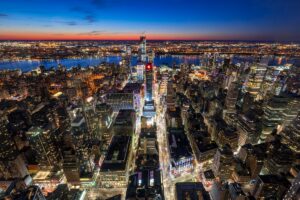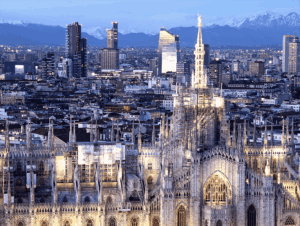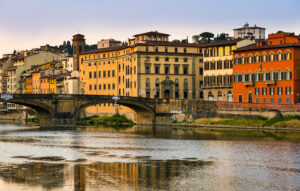Within Milan’s layered urban landscape, an unprecedented convergence of financial power and cultural ambition is reshaping the city’s identity. The transformation manifests most visibly in the treatment of its architectural heritage, where two millennia of history are finding new purpose in the contemporary art market.
A City of Architectural Plurality
Unlike other European capitals, Milan presents a unique urban composition where Roman columns stand alongside Gothic spires and Rationalist towers. This architectural diversity, spanning from the San Lorenzo colonnade’s ancient Corinthian columns to the Liberty-style flourishes of Casa Galimberti, creates distinct investment microclimates within the city’s property market.
The recent surge in property values reflects this architectural complexity. Buildings within the historic core have multiplied in value since the 2015 World Expo, driven by Italy’s strategic tax incentives and an influx of international capital. The “Superbonus scheme,” designed to encourage property renovation, has particularly benefited owners of historic properties, enabling preservation while adding modern amenities.
Evolving Cultural Districts
The transformation of Milan’s industrial zones into cultural hubs exemplifies the city’s current trajectory. The SouPra district, anchored by OMA’s Fondazione Prada, demonstrates how manufacturing heritage adapts to contemporary cultural use. This district’s evolution parallels broader market shifts, as international investors seek opportunities in areas combining historical character with cultural significance.
Yet beneath surface developments lie complex market dynamics. While prestigious galleries like Thaddaeus Ropac establish locations in neoclassical palazzi, others such as Peres Projects and Lisson Gallery have retreated. These movements through historic buildings like Palazzo Belgioioso illuminate the challenges of sustaining cultural enterprises amid rapidly appreciating property values.
Heritage as Market Driver
Milan’s architectural legacy creates unique investment considerations. Properties with historical significance, particularly those suitable for gallery conversion, command premium valuations. The city’s Art Deco portfolio, exemplified by Villa Necchi Campiglio, demonstrates how preserved historical interiors enhance cultural value and investment potential.
The post-war period adds another dimension. The modernist developments of the 1950s and 1960s, influenced by New York but executed with distinctive Italian sophistication, offer spaces particularly suited to contemporary art display. Works by Gio Ponti and Alberto Rosselli now attract both preservation interest and commercial viability.
Market Mechanisms
For property investors, Milan’s cultural evolution presents specific opportunities within its regulatory framework. The city’s 22% VAT rate and bureaucratic complexity require careful navigation, particularly in heritage properties. However, the combination of favorable non-dom tax policies and growing international interest suggests sustained market strength.
Strategic property assessment must consider both historical value and contemporary use potential. Properties near cultural institutions command premium valuations, while emerging cultural districts offer development opportunities. The planned expansion of institutions like Museo del Novecento signals continued sector growth.
Investment Trajectory
As Milan approaches the 2026 Olympics, the relationship between architectural heritage and cultural ambition intensifies. The conversion of the Porta Romana railway yard into the Olympic Village exemplifies how major sporting events catalyze cultural district development.
The market challenge lies in balancing preservation with innovation, ensuring capital influx enhances rather than overwhelms the cultural ecosystem. Success requires maintaining equilibrium between commercial viability and cultural authenticity that has characterized Milan’s most successful historical adaptations.



